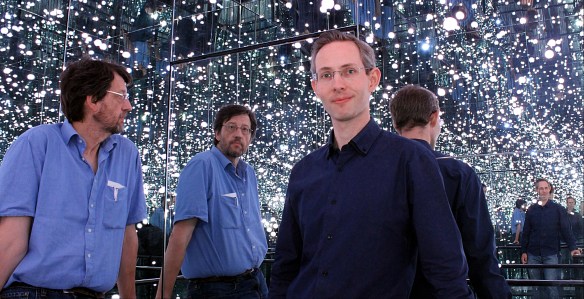by Dr. Donald G. Bruns

Don Bruns and his wife Carol on eclipse day at the Lions Camp on Casper Mtn. The tripod is bolted to the custom mosaic designed and built by his cousin Steve Lang.
After much anticipation, two experiments had great successes last year. On August 17 2017, the LIGO/VIRGO collaboration monitored the merger of two neutron stars millions of light years away. Only four days later in Wyoming, an experiment to measure the gravitational bending of starlight by the Sun acquired the best data since the idea was first tested in 1919, by Sir Arthur Eddington, in Africa. I published my results on that experiment in Classical and Quantum Gravity on March 6, 2018. My solo project to repeat Eddington’s achievement, which made Einstein famous, required a lot less manpower than LIGO!
Early last century, Einstein published his General Theory of Relativity that contained some unusual predictions, including the idea that massive bodies bend light beams. The only way to test this would be during a total eclipse, when the sky would be dark enough to see stars close to the Sun, where the effect just might be measurable.
I started planning Eddington’s re-enactment when I found out that no one had attempted it since 1973 (also in Africa) and that no one had ever succeeded in getting all the parts to work during those precious few minutes of totality. I assumed that with modern charge-coupled device (CCD) cameras and computerized telescopes, the experiment would be much easier. I was wrong! While some aspects were simplified (the Gaia star catalog provided accurate star positions, for example, and modern weather predictions and the compact equipment eased many logistics problems), dealing with pixels, turbulence, and a limited sensor dynamic range presented new challenges.




You must be logged in to post a comment.